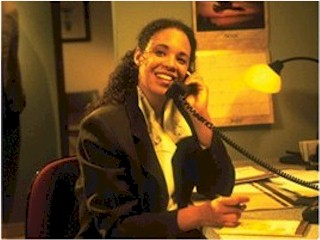- Home
- TrainingABC Blog
- Articles
- Customer Service Training - Make Sure You Have Specific Standards
Customer Service Training - Make Sure You Have Specific Standards

Posted: 01-29-2011 03:14 AM
Views: 4673
Synopsis:
It's really easy for companies to fall into the trap of having feelings rather than standards when developing a customer service policy. Without clear, concise standards its easy for employees to misinterpret policies and also very difficult to train new employees on what is expected. Customer service training should be as crystal clear as possible.
It's really easy for companies to fall into the trap of having feelings rather than standards when developing a customer service policy. Without clear, concise standards its easy for employees to misinterpret policies and also very difficult to train new employees on what is expected. Customer service training should be as crystal clear as possible.
Many companies tell their employees to have a "positive attitude" or to be "friendly" to the customers. The problem with these words is that everyone has a different definition of them and in real world situations employees will have a difficult time performing up to the level that is expected.
Customer service standards should be very specific such as: when a customer walks through the door you should smile, greet and welcome them every time. The standard should go on to give specific greetings and welcomes that they could use like "Hi, welcome to ABC Store." or "Good Morning, Welcome to ABC Store. Can I help you find something?" This specific type of instruction is easy to train and leaves no gray area. Employees know precisely what is expected.
All operations that involve the customer should be in your customer service standards. Even expected levels of personal hygiene and dress should be specifically addressed. People have widely varying interpretations of acceptable hygiene and dress. This will leave no doubt as to what is expected.
Many companies say things like "be helpful to the customers." However, this doesn't tell an employee much and once again there are widely varying definitions of helpful. A better way to put it would be - "If a customer asks for your assistance in finding an item, do not just tell them aisle 7, but take them right to the item and point it out on the shelf. Finish by asking them if they have any questions."
Don't leave any other policies to chance when they involve the customer. For instance, many companies expect their cashiers to check customers out expeditiously but they don't tell them how. A customer service standard should say something like - "If there are more than three customers waiting in line, then a manager should be called immediately to open up a new line. The next person in line should be asked to populate the new line first." Without a policy like this a cashier will not know when to specifically call for help and the new cashier might just let customers populate the line without direction and bypass people who have been waiting longer. Both of these problems would cause a negative customer experience.
The phone is another area that causes negative customer service issues. A customer service standard should specifically mention steps to handle phone calls. For instance - "Answer the phone only if you are not assisting a customer in person." The steps should even detail specifically who answers the phone in different situations.
Avoid feelings and generalizations in customer service policies. Having specific standards of behavior and steps in every different customer situation will make your employees more confident and your customer more satisfied. Employee Training will be easier and you'll customers will come back more often when they receive a consistent level of service.
Charlie Bentson King is a writer and producer for TrainingABC. TrainingABC is a distributor of customer service videos such as Give em the Pickle.
